One of the greatest museums in California was established as the Pasadena Art Institute in 1969 and was later renamed the Pasadena Art Museum.
Today, the non-profit museum bears the name of Norton Simon (1907-1993), an industrialist and philanthropist who became the wealthiest man in the United States.
He became a fervent art collector and by the 1960s and was in desperate need to find a location to store the more than 4,000 works of art that he had amassed.
He agreed in the early 1970s to support the finances of the building while being able to use 75% of the building for his personal collection.
Following Simon’s death in 1993, a $5 million renovation project led by renowned architect Frank Gehry was started to merge both collections into one building.
Today, the museum houses more than 11,000 objects, including an impressive collection of European art, sculptures, and Asian art.
In this article, you’ll discover some of the most famous paintings at the Norton Simon Museum in Pasadena, a city just northeast of Los Angeles.
1. Branchini Madonna – Giovanni di Paolo
- Date created: 1429
- Dimensions: 182.9 x 99.1 centimeters (62 x 39 inches)
The Branchini Madonna is a painting by the Italian artist Giovanni di Paolo (1403-1482), one of the most celebrated members of the Sienese School in the 15th century. The Gothic artists from Siena were heavily influenced by Byzantine art and this reflects in this magnificent work of art at the Norton Simon Museum.
This work was completed using tempera and gold leaf on a wood panel. The heavily gilded painting also features gems made of colored glass in the Virgin’s crown which makes it look extremely fascinating when illuminated by candlelight.

2. Resurrection – Dieric Bouts
- Date created: 1455
- Dimensions: 89.9 x 74.3 centimeters (35.3 x 29.2 inches)

Resurrection is the title of a painting by Dieric Bouts (1410-1475), an Early Netherlandish artist who studied under Rogier van der Weyden. He produced some of the most notable artworks of his generation as he was the first northern painter to integrate a single vanishing point.
The title of this painting is self-explanatory as it depicts the moment shortly after Jesus Christ has risen from the dead. What’s remarkable is that this painting was once part of a large altarpiece that features 4 or 5 paintings depicting scenes from the Life of Christ. Some other panels are part of the collections of the National Gallery in London and The Getty in Los Angeles.

3. Madonna and Child with the Book – Raphael
- Date created: 1503
- Dimensions: 55 × 45 centimeters (22 × 18 inches)
Madonna and Child with the Book is a painting by Raphael (1483-1520), the Renaissance master who produced numerous Madonna paintings in the early 16th century. This painting depicts the Virgin Mary with her infant Jesus Christ while both hold a book that bears an inscription of the Ninth Hour.
These so-called “Nones of the Canonical Offices” were recited by monastic communities daily. The small size of the painting means it was probably commissioned to serve devotional purposes. The pyramidal composition and distant landscape are both trademarks of the renowned Italian painter.
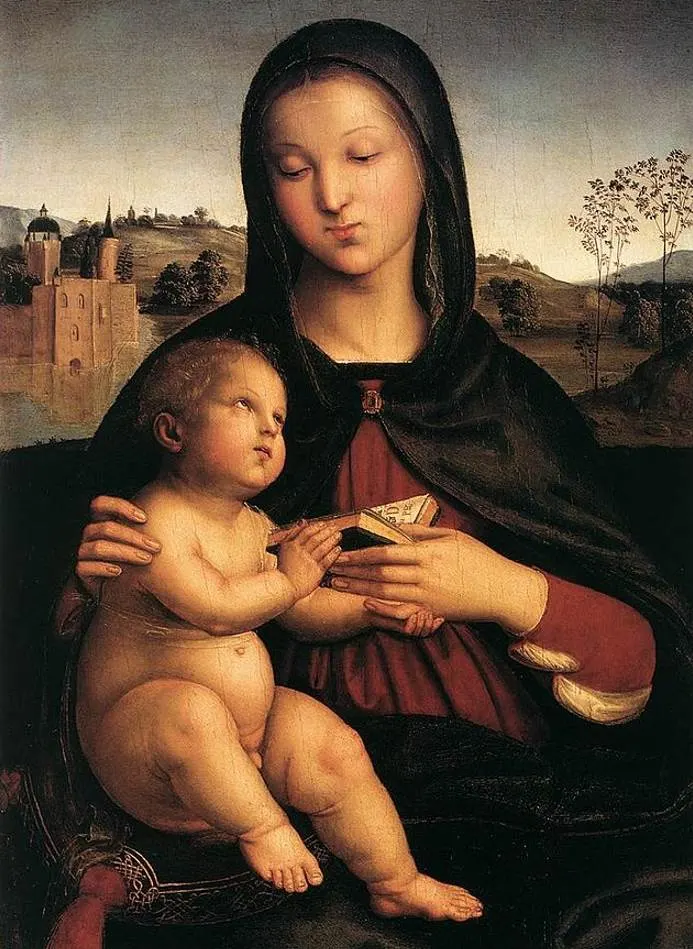
4. Adam and Eve – Lucas Cranach the Elder
- Date created: 1530
- Dimensions: 190.5 × 69.9 centimeters (75 × 27.5 inches) (Both panels)
Adam and Eve is the title of numerous paintings by Lucas Cranach the Elder (1472-1553), one of the most renowned German artists of the 16th century. The artist of the Northern Renaissance was the court painter of the Electors of Saxony for most of his career and mainly focused on portraits.
When he didn’t paint the members of the royal family, he focused on religious paintings that often features Adam and Eve. He started producing either single or double panels depicting both figures in 1509. The paintings at the Norton Simon Museum feature a pair of tall panels in Cranach’s typical composition.

5. The Flight into Egypt – Jacopo Bassano
- Date created: 1545
- Dimensions: 123.2 x 196.2 centimeters (48.5 x 77.25 inches)
The Flight into Egypt is a painting by Jacopo Bassano (1510-1592), a member of the 16th-century Venetian School. His oeuvre is defined by a richness in color that was typical of the Mannerist paintings produced during this era, as well as the complex compositions of his religious paintings.
Bassano often included peasants and pastoral landscapes in his religious works and this painting is a prime example of this. The work is centered around the Virgin and her child who are the only figures who appear to be calm. All others are defined by diagonal movement as they follow the angel to the right.
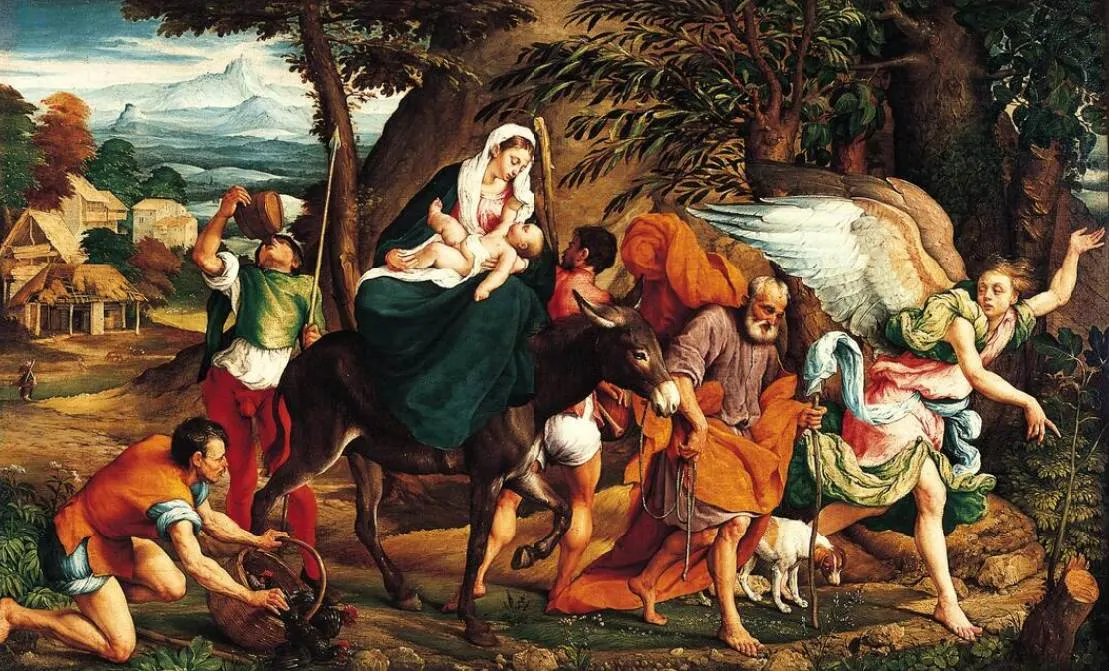
6. The Holy Women at the Sepulchre – Peter Paul Rubens
- Date created: 1611-1614
- Dimensions: 87.6 x 107.3 centimeters (34.5 x 42.25 inches)
The Holy Women at the Sepulchre is a painting by Rubens (1577-1640), the most acclaimed Flemish artist of the first half of the 17th century. The Baroque master defined the style of drama and movement after his extended stay in Itlay in the first decade of the 1600s.
Peter Paul Rubens completed this painting shortly after he had returned to his native Antwerp in 1610. It depicts the scene in which several women visited the tomb of Jesus Christ a couple of days after his crucifixion. Two angels tell the women about Christ’s resurrection to which each of them reacts differently.
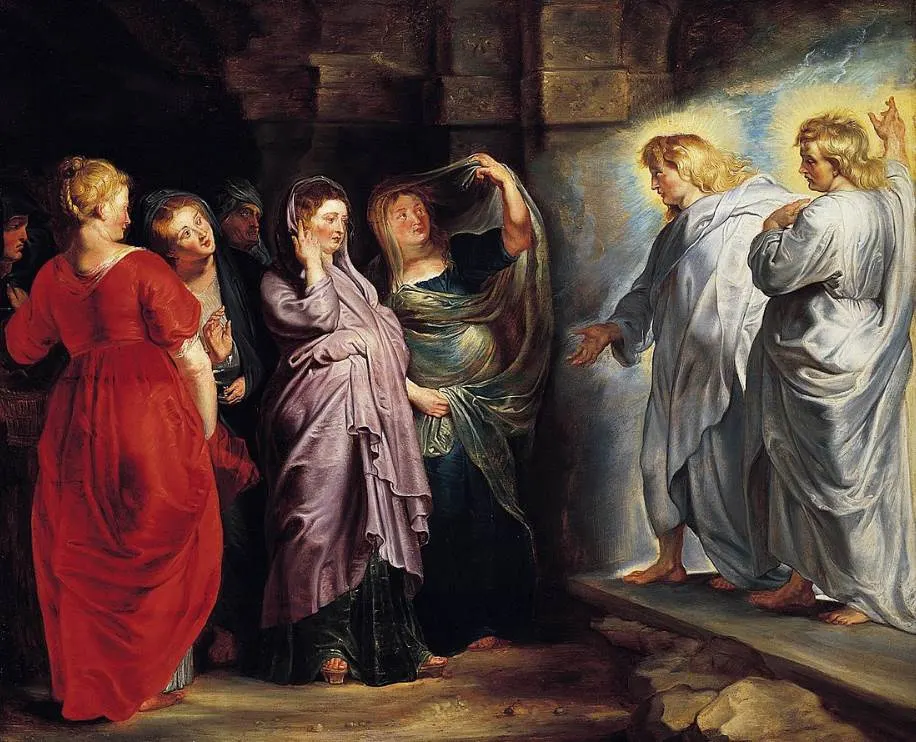
7. Self-Portrait – Rembrandt van Rijn
- Date created: 1636-1638
- Dimensions: 63.2 x 50.5 centimeters (24.87 x 19.87 inches)
The Self-Portrait of Rembrandt van Rijn (1606-1669) at the Norton Simon Museum was completed when the artist was in his early thirties. He depicted himself wearing the traditional artist’s beret, a piece of headwear worn by artists that became popular in the 17th century.
Rembrandt’s oeuvre consists of dozens of self-portraits that serve as the artist’s visual autobiography. The stylish contemporary clothes that the Dutch artist wears in combination with the artist’s beret are references to the fact that he was at the height of his career at the time.
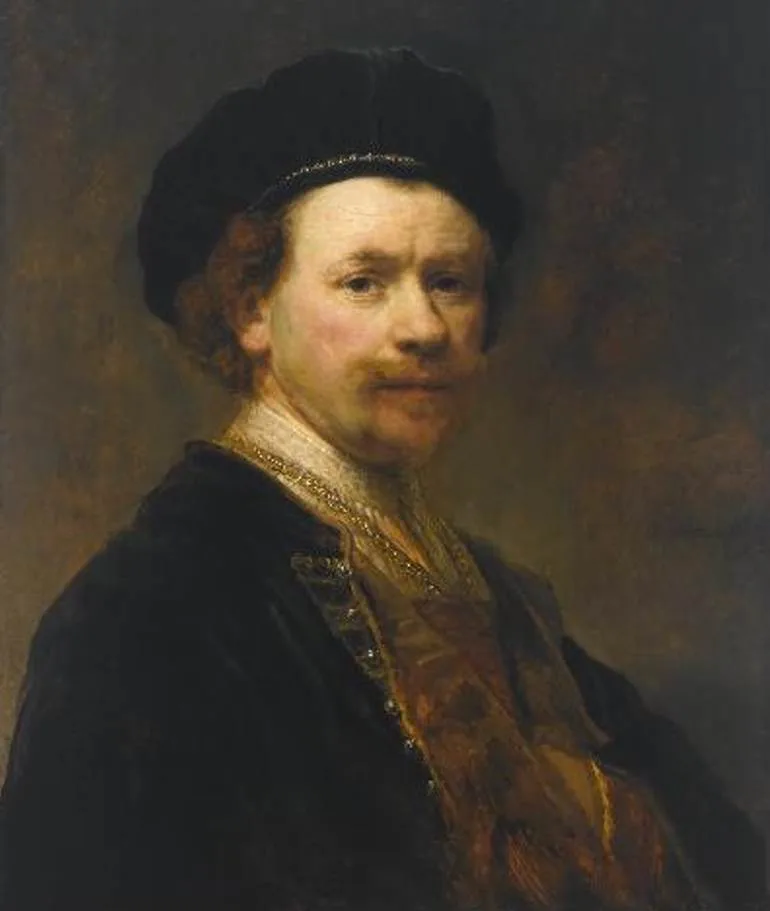
8. Saint Jerome in Penitence – Francisco Goya
- Date created: 1798
- Dimensions: 190.8 x 114.3 centimeters (75.12 x 45 inches)
Saint Jerome in Penitence is a painting by Francisco Goya (1746-1828), the leading Spanish artist of the late 18th and early 19th centuries. It was completed during a hard period in the artist’s life because the Romantic painter had lost his hearing because of a mysterious illness in the early 1790s.
The painting depicts Saint Jerome, an early Christian scholar who lived in the desert as an ascetic for 4 years to find enlightenment. He holds both a crucifix and a stone which he used to beat his own chest. Later in his life, he became the first man to translate the Bible into Latin and Goya also made references to this fact in this remarkable work of art.
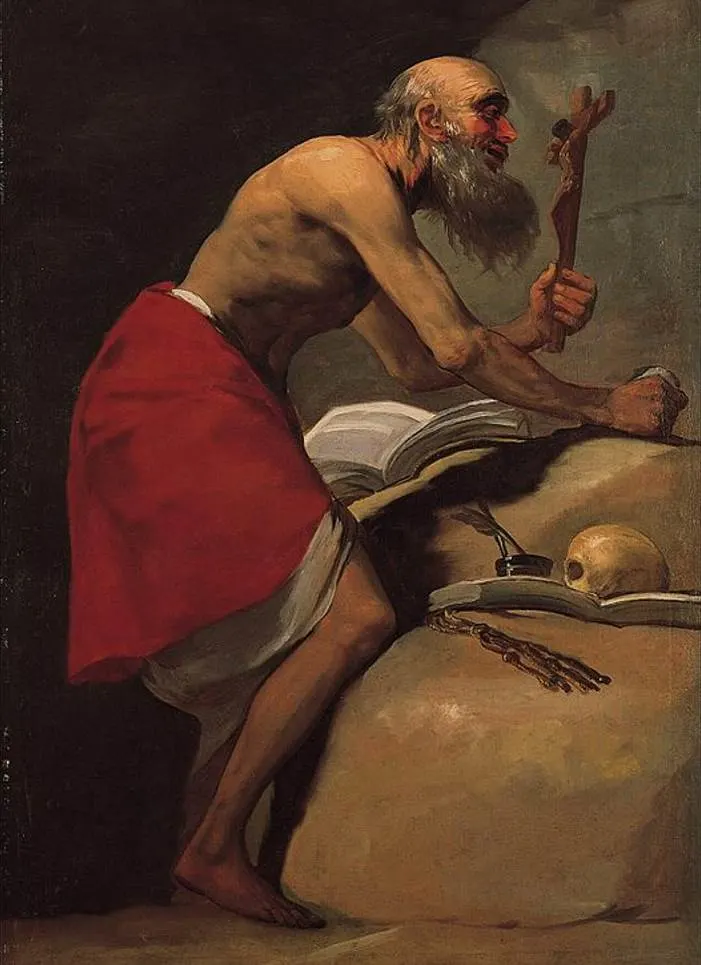
9. The Pont des Arts – Pierre-Auguste Renoir
- Date created: 1867-1868
- Dimensions: 60.9 x 100.3 centimeters (24 x 39.5 inches)
The Pont des Arts is the title of a painting by Pierre-Auguste Renoir (1841-1919), one of the leading Impressionist artists in the 19th century. It depicts the bridge in Paris now known as the Pont des Arts which is situated near the Louvre Museum.
The bright painting allows us to get a remarkable view of the Left Bank of the River Seine in central Paris during the 1860s. The domed building is the Institut de France and it provides a nice backdrop to the scene which depicts commuters who embark on the ferry.
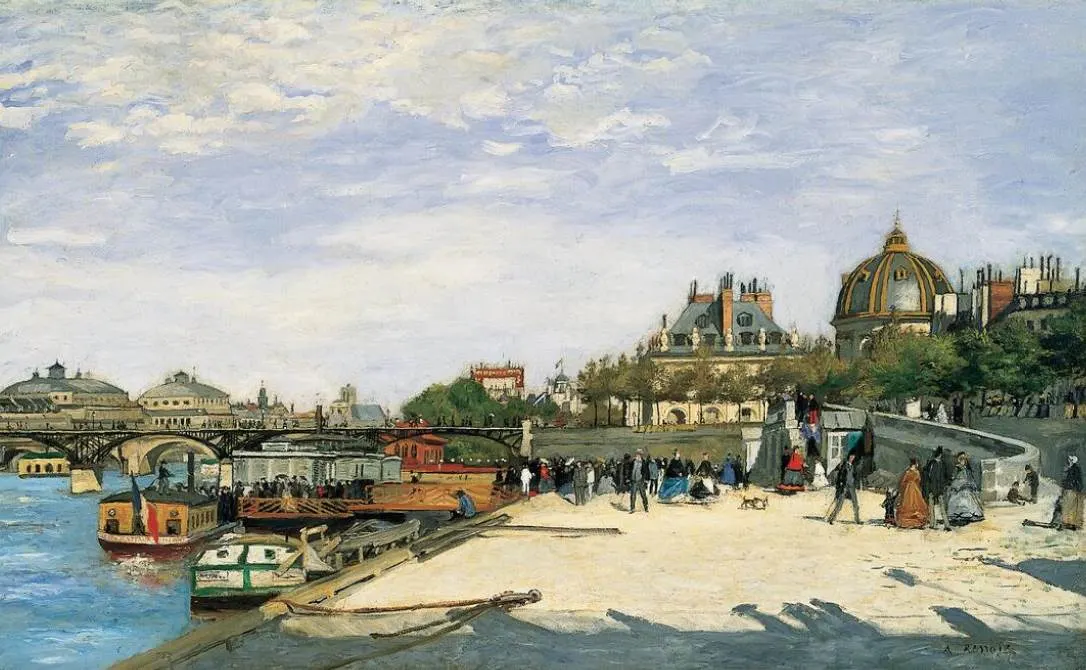
10. Mulberry Tree – Vincent van Gogh
- Date created: 1889
- Dimensions: 54 x: 65 centimeters (21.2 x 25.5 inches)
Mulberry Tree is one of several paintings at the Norton Simon Museum by the hand of Vincent van Gogh (1853-1890), the celebrated, yet troubled Post-Impressionist artist. This painting was completed in October of 1889, the year he checked himself into the mental asylum at Saint-Rémy-de-Provence.
This hypnotic painting is typical of the artist’s style during the final months of his life. The thickly-applied visible brushstrokes almost make it appear as if the mulberry tree is on fire. The artist considered this painting to be one of his best depicting this particular type of tree.

